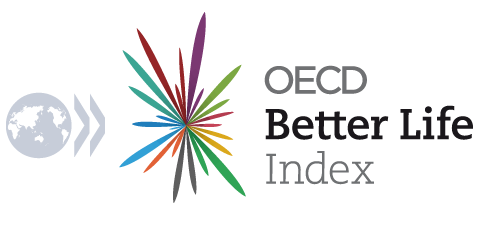Happiness as a Business Model
By guest author
On November 1, 2012 New Jersey and New York were grappling with the devastating effects of super-storm Sandy. On the same day Bloomberg’s Businessweek magazine published a story with the controversial cover headline “Its Global Warming, Stupid.” The next day, Bloomberg posted another bluntly written article arguing that the best defense against devastating storms like Sandy is to live in a rich country. Notably the article was featured in the Global Economy section.
Experts predict that emerging markets will grow at double digit rates over the medium term. Along with this growth an emerging middle class will buy cars, air conditioners, electronics and other consumer products. As companies invest in the growth of these new markets, they also face growing risks to their business. Climate change disproportionately impacts developing countries and the consequences of increased temperatures will devastate ecosystems, industrial processes, supply chains, infrastructure, and human health—all of which will fundamentally disrupt the systems of goods production on which companies rely. While many experts agree that the planet cannot sustain the current levels of consumption, much less the expected growth in consumption by developing countries, we haven’t heard much about how to actually redefine our economic, social and political systems, as well as our human psychology, away from the status quo. At this year’s BSR conference, Isabel Sebastian, a Bhutan-based business and sustainability expert, presented an intriguing new model for companies to consider, based on the Bhutan model for Gross National Happiness or “GNH.”
GNH is based on performance indicators across 9 domains (psychological wellbeing, time use, community vitality, cultural diversity, ecological resilience, living standard, health, education, and good governance) measuring national progress on its citizens’ wellbeing rather than the country’s production of goods and services—or the GDP—alone. In order to apply GNH as a business model a transformation of thinking and actions by companies would need to occur. Companies would have to redefine the development of products and services for “rapid obsolescence”—or the expectation that products are made to be replaced—to ones that not only meet the needs of society but also meet the opportunity to contribute to society.
Companies would also need to start measuring business success by its ability to serve, facilitate and engage with its consumers, communities and society in which they sell and operate rather than the sale of products alone. This would also mean rethinking consumers and suppliers as partners and collaborators in their business. The most challenging aspect of this model would be to fundamentally redefine the purpose of profit. Companies would have to start asking tough questions such as “How much profit is “enough”?” and “How should our profits be spent and distributed?” and “What is the stress level and work-life balance of my employees?”
Some interesting examples of new business models are emerging that aim at preserving the planet, supporting healthy employment and employees, and sustaining the long term health of business. In 2011, PUMA, the German sportswear company, published a groundbreaking report on the company’s environmental “profit and loss.” The tool is designed to provide a fundamental paradigm shift for how the company should make business decisions—aimed not only at conserving ecosystems but also at ensuring the longevity of its business by highlighting risks, as well as opportunities to create more effective, efficient systems and processes that mitigate these risks.
Another example is Zappos, the online shoe store that was recently acquired by Amazon. Since its founding, Tony Hsieh has guided the company with 10 core values taking into account culture and people as well as profit. In fact, Hsieh published a book in 2010 entitled “Delivering Happiness”, now translated into 20 languages, focused on building a business model based on happiness.
Finally, Facebook, the social networking site, developed an app which determined its users’ “gross national happiness.” The model focused on the sentiments of its 300-million-a-day users to determine relative up and downs in different countries and at different times of year. While the app is no longer active, some analysts are wondering if its modeling can be useful for measuring GNH business growth through the sentiments of employees.
It goes without saying that healthy businesses must have a healthy bottom line. However , with the enormous challenges we face come enormous opportunities. As a society we have the opportunity to change our indicators for “success” and build business models that account for the “real cost” of doing business as well as the “real value”. The opportunity is before us to build a business model that is based on the human desire for happiness and well being.
About the author:
With 10 years of experience working in CSR, Sasha Radovich uses her expertise in sustainable supply chains, stakeholder engagement, and multi-stakeholder initiatives to support BSR’s member companies in the information and communications technology (ICT) and consumer products sectors.
Find out more:
OECD work on green growth and sustainable development

Comentarios